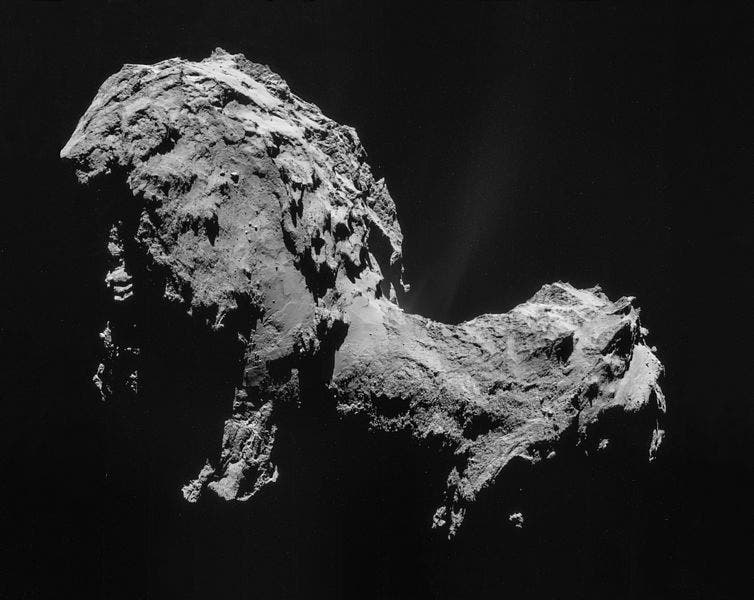The European Space Agency has confirmed that the Rosetta mission will continue until at least September 2016, when it will most likely land on a comet called Comet 67P.

Rosetta is a robotic space probe built and launched by the European Space Agency. Along with Philae, its lander module, Rosetta is performing a detailed study of comet Churyumov–Gerasimenko (67P). In August 2014, Rosetta rendezvoused with the comet 67P and sent Philae to land on the comet, from which it gathered some extremely valuable information (such as water not coming from comets).
Now, the mission will be continued, and the probe itself might land on a comet by September next year – if everything goes according to plan.
“This is fantastic news for science,” said Matt Taylor, ESA’s Rosetta Project scientist. “We’ll be able to monitor the decline in the comet’s activity as we move away from the Sun again, and we’ll have the opportunity to fly closer to the comet to continue collecting more unique data. By comparing detailed ‘before and after’ data, we’ll have a much better understanding of how comets evolve during their lifetimes.”
The next comes after Philae woke up from its seven month hibernation which resulted after Philae which landed in an unintended, shadowed area on the surface of a comet in November and couldn’t recharge with solar energy. But on Friday, the lander sent two-minute radio transmissions to Earth, signaling its awakening.
“Among other things, we have received updated status information,” Michael Maibaum, deputy operations manager at the German space agency’s Lander Control Center in Cologne, said in a statement.“ At present, the lander is operating at a temperature of zero degrees Celsius, which means that the battery is now warm enough to store energy. This means that Philae will also be able to work during the comet’s night, regardless of solar illumination,” he said.
Rosetta’s orbit is currently being adjusted so Philae can have an easier time signalling back to Earth, and to prepare for the ultimate landing on the comet it’s been following around for so long.
“This time, as we’re riding along next to the comet, the most logical way to end the mission is to set Rosetta down on the surface,” said Patrick Martin, Rosetta Mission Manager.
Unfortunately though, even if Rosetta manages to land on 67P, it seems unlikely that it may manage to send data from there.
Was this helpful?



